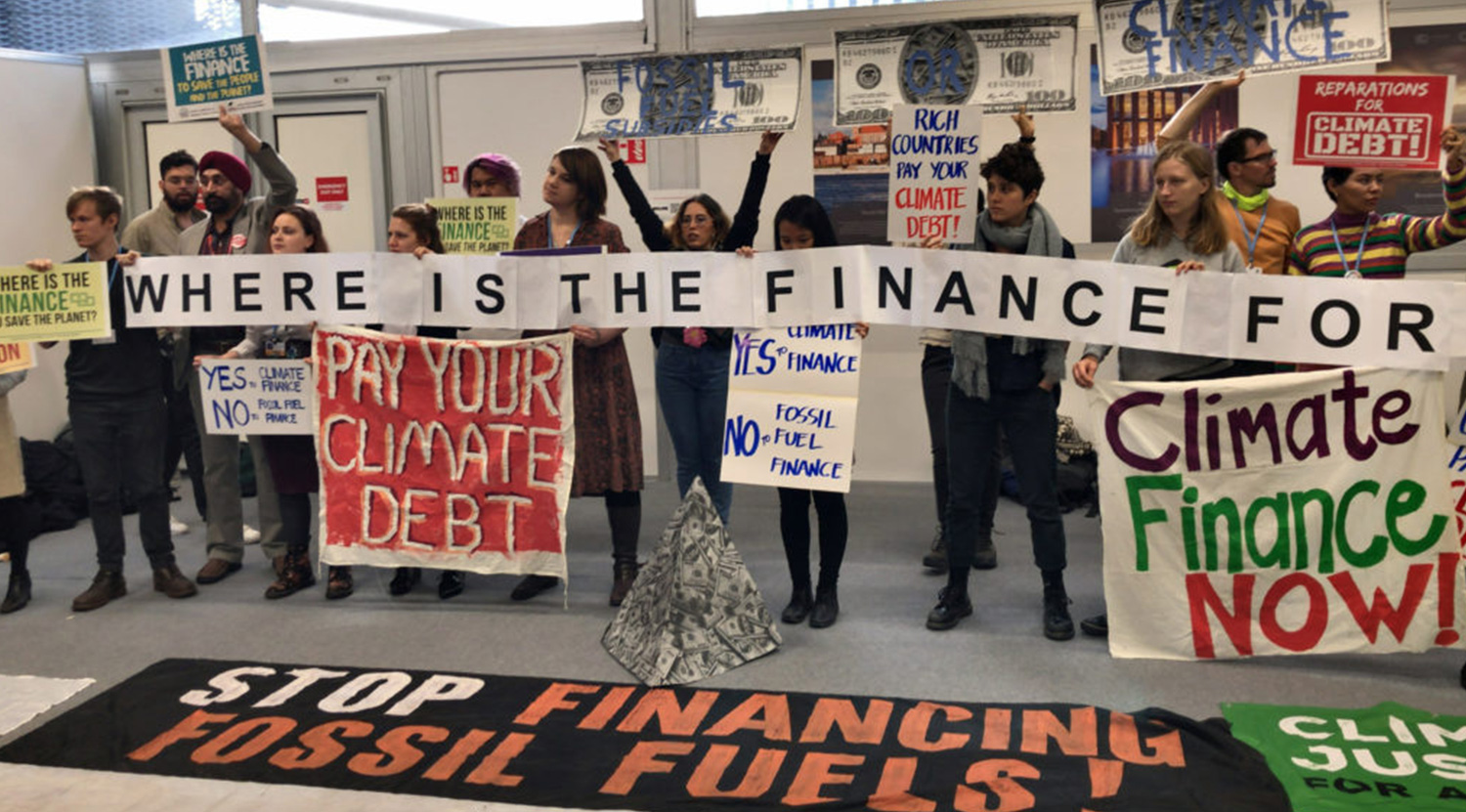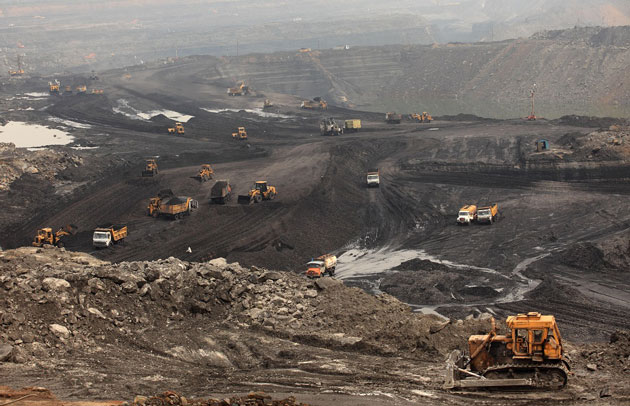Rich nations break promise, little climate finance for South Asia
- Developed countries are taking action to reduce their own carbon emissions, but they are not coughing up enough money to help vulnerable poorer countries do the same, or adapt to the intensifying impacts of climate change.

Eleven years after developed countries committed to delivering US$100 billion a year to help poor nations deal with climate change, they have fallen short of the target both in terms of quantity and, more importantly, quality of the finance earmarked for climate action. This shortfall, experts say, will disproportionately affect South Asia, a region prone to natural disasters and deeply dependent on carbon intensive energy and so needing significant support to tackle both vulnerabilities in unison.
The fifth anniversary of the Paris Agreement will be celebrated on December 12 at the Climate Ambition Summit, a virtual conference co-hosted by Britain and France, in partnership with Chile, Italy and the UN. The event is an opportunity to take stock of the mitigation and adaptation promises made in 2015, announce further commitments to reduce carbon emissions and count the money spent or pledged since the 2009 UN climate talks in Copenhagen.
Despite the Covid-19 crisis, which pushed the key climate talks to next year, China, Britain, Japan, South Korea and other countries have come forward with plans for aggressive decarbonisation of their economies, in line with the long term vision of the Paris Agreement. But observers warn that neglecting climate finance may hinder action in developing countries.
“This year was supposed to be a milestone for climate finance,” says Kashmala Kakakhel, a climate finance expert from Pakistan. “When the US$100 billion goal was set in 2009, we just set this 2020 deadline.” Countries discussed public and private finance, mitigation and adaptation, she says. “But nobody really went into the details of it.”
At the Copenhagen summit, then US Secretary of State Hillary Clinton had said rich countries would start paying poor countries to tackle climate change, ramping up the financial support to US$100 billion a year by 2020. That became one of the UN climate agreements.
Money overstated
According to data from the Organisation for Economic Cooperation and Development (OECD), which tracks climate finance provided by industrialised economies to developing countries as part of their obligations under the agreement, the total finance in 2018 amounted to US$78.9 billion. This represents an 11% increase from 2017, when countries mobilised US$71.2 billion.
While these results suggest UN members from rich nations may be close to the target with two years left to analyse, “the devil is in the detail,” Kakakhel says. She quotes a recent Oxfam report which found that of the estimated US$59.5 billion in public climate finance reported by developed countries between 2017 and 2018, climate specific assistance hovers around US$20 billion. The rest is wider development money or market loans.
“The biggest issue we have is that 70% of this amount is actually loans,” Kakakhel explains. “This is money that developing countries need to pay back, and 40% of these loans are not concessional loans,” which are generally offered on more generous terms and with longer grace periods than market loans. This means that countries that borrow now to tackle climate change will pass a growing debt onto future generations, who will likely face worse climate impacts than we do today.
Public climate finance has grown steadily, but mostly through money that has been lent on not very convenient terms. “Most loans continue to be counted at their full face value,” the Oxfam report says, “rather than as the amount of money given to a developing country once repayments, interest and other factors are accounted for,” a category known as “grant equivalent”.
A question of climate justice
The lack of robust progress on climate finance is a “big worry for developing countries, and particularly for South Asia, which is a disaster hotspot,” says Harjeet Singh, global climate change lead with ActionAid. “If a developing country is hit by a major event, like the cyclone Amphan that made landfall in West Bengal earlier this year, its priority will be emergency response. And only once this is solved do nations have the luxury to think about adaptation and mitigation.”
If donors are only doing “accounting tricks,” Singh says, developing countries will not have money to work on mitigation, because their immediate priority is humanitarian response, to respond to what in climate diplomacy is known as loss and damage.
The way things are going, Singh says, the 2020 virtual summit will be largely about climate ambition. “Countries will talk about their mitigation targets, will talk very little about finance and there’s hardly going to be anything about loss and damage.”
Developing countries and NGOs lobbied for years before they could get the issue of loss and damage even discussed at the UN climate talks. In 2013, they managed to get an official committee put together to assess the loss and damage countries were suffering already. As climate change impacts increased, the noise about loss and damage has grown. But there is still no teeth to do anything about it under the UN system. The main objection to formal recognition of loss and damage has come from the US, which fears it will open the door to compensation lawsuits from around the world. In the negotiations leading up to the Paris agreement, the US insisted that any mention of loss and damage should also say there would be no liability involved.
“There is an existential need for faster, deeper emissions reductions at scale and for improving the capacity of vulnerable countries to adapt to climate impacts,” said Sonam. P Wangdi of Bhutan, the country that is the current Chair of the Least Developed Countries Group. “Increasing funding for climate actions in developing countries will be critical.”
Key South Asian economies such as India, Pakistan and Bangladesh are both disaster prone and highly dependent on fossil fuels such as coal and natural gas. India is responsible for the world’s fourth largest share of carbon emissions, and despite its aggressive push to add renewable energy to the mix, it is struggling to phase out coal and decarbonise sectors such as cement, steel making and others.

When it comes to climate response in South Asia, “if India gets it wrong, then everything goes wrong,” says Dhruba Purkayastha, Interim India Director with the nonprofit Climate Policy Initiative (CPI). The CPI’s latest analysis on India’s climate finance indicates that in order to reach its Paris Agreement pledges India will need about US$170 billion per year in climate investments until 2030. But in 2017 and 2018, the total finance flows amounted to US$17 and 21 billion per year.
The gap is huge, Purkayastha says, but Indian banks also have significant savings that could be invested in climate sensitive plans. At the Climate Ambition Summit, he adds, “I would also like to see more climate investments from international institutional investors into India.” He says that such institutions “are probably sitting on US$200 trillion, and only a few percentage points go to climate investment.” They should increase this amount through green pension funds, sovereign funds and other long term financial investments, he adds.
Gaia Larsen, a climate finance expert with the nonprofit World Resources Institute (WRI), says that India faces such a huge set of challenges that “I wouldn’t want to say it should just pay for climate action internally.” The country would certainly benefit from more foreign investments, particularly for adaptation, which still lags behind mitigation in terms of funding, she says. India is not unique in this respect: According to the OECD, mitigation represented 70% of the global climate finance in 2018, adaptation accounted for 21%, while the rest cuts across both sectors.
However, Larsen concedes, India is also uniquely placed because it can tap into domestic finance, even though its National Adaptation Fund has not been replenished for several years. This fund in itself is probably going to provide only a sliver of the funding needed, she says. “But it’s a start, and it’s a symbol.”
Climate negotiations will resume next year in Glasgow, when all members of the UN Framework Convention on Climate Change will have to play their part to shift the planet’s economy towards a low carbon pathway. Failing to maintain a focus on climate finance may mean that some of the biggest and most polluting economies in the world may not be able to realise their potential for change.
Lou del Bello is a journalist based in New Delhi. She Tweets @loudelbello
This article was first posted on The Third Pole.
This work is under Creative Commons’ Attribution-NonCommercial-NoDerivs 2.0 England & Wales License.







